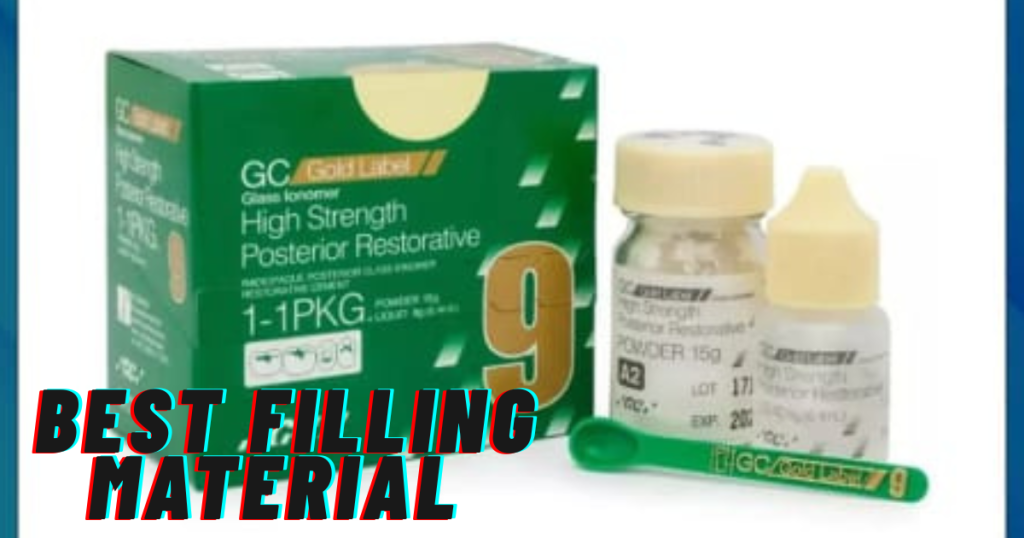Physical Address
304 North Cardinal St.
Dorchester Center, MA 02124
Physical Address
304 North Cardinal St.
Dorchester Center, MA 02124
Ever wondered what that stuff is your dentist packs into a cavity to fix a toothache or prevent further decay, and why there are so many options out there? Cavity filling material—ranging from traditional amalgam to tooth-colored composites and even natural alternatives like glass ionomer—is essentially a durable substance designed to seal holes in your teeth, restore function, and blend seamlessly with your smile, all while stopping bacteria in their tracks. Whether you’re dealing with your first filling or just curious about dental repairs, this beginner-friendly guide breaks it down simply: what each type is, pros and cons, and how to choose the right one for your needs. Let’s fill in the gaps and get you informed for that next check-up!

The Main Types of Filling Materials
Dentists pick from several materials based on cavity size, location, and your preferences. Amalgam, a mix of metals like silver and mercury, has been around forever for back teeth. Composites are resin-based and match your tooth color. Porcelain or ceramic offers a premium feel, gold is old-school tough, and glass ionomer releases fluoride for extra protection.
Amalgam Fillings: The Classic Choice
These silver fillings are super strong and cheap, ideal for molars under heavy chewing.
Pros: Last 10-15 years, affordable, and quick to place.
Cons: Visible metallic look, contains mercury (safe per studies but some worry), and can expand/contract with temps.Great if aesthetics aren’t key.
Composite Fillings: For a Natural Vibe
Made from plastic resins and glass particles, these blend right in.
Pros: Tooth-colored for front teeth, bond directly for support, less tooth removal needed.
Cons: Wear out in 5-10 years, prone to staining from coffee or wine, and cost more upfront. Perfect for visible spots.
Porcelain or Ceramic: The Fancy Option
Crafted from baked clay-like material, these mimic enamel shine.
Pros: Stain-resistant, natural appearance, durable for larger fills.
Cons: Brittle if not handled right, pricier, and might need multiple visits. Good for folks wanting long-term beauty.
Gold Fillings: Timeless Strength
Alloy of gold and other metals, these are custom-lab made.
Pros: Extremely durable (20+ years), biocompatible, no corrosion.
Cons: Expensive, metallic shine stands out, longer process. Best for back teeth in high-wear mouths.
Glass Ionomer: The Fluoride Booster
A mix of glass and acrylic that releases fluoride over time.
Pros: Bonds chemically, fights decay, gentle on kids’ teeth.
Cons: Least durable (5 years max), wears quickly in chew-heavy areas. Handy for small cavities or temporary fixes.
How to Choose the Right One
Factor in cavity spot—back for strength like amalgam, front for looks like composite. Budget matters too; talk allergies or concerns with your dentist. In 2025, eco-friendly composites are trending for sustainability fans.
Quick look at costs
Fillings run $50-$450 per tooth without insurance—amalgam cheapest at $100-200, composites $150-300, porcelain up to $500. Many plans cover basics; check for out-of-pocket surprises.
The Filling Procedure in a Nutshell
Dentist numbs, removes decay, shapes the hole, then packs and hardens the material—done in one visit usually. Minimal pain, quick recovery.
Aftercare Tips
Brush gently, floss daily, avoid hard candies at first. See your dentist if it feels off—proper care makes fillings last longer.
FAQs About Cavity Filling Materials
Which is safest?
All are FDA-approved; composites avoid mercury if that’s a worry.
Do fillings hurt?
With numbing, no—maybe mild sensitivity after.
How long do they last?
5-20 years depending on type and habits; gold tops the list.
Can kids get them?
Yes, glass ionomer is gentle and fluoride-releasing for little ones.
What’s best for visible teeth?
Composites or porcelain for that seamless match.
Wrapping up this simple guide to cavity filling materials,(“When a cavity pops up in any tooth, yeah, it’s super important to get it filled to stop things from getting worse. There are tons of materials out there, like glass ionomer, blue glass ionomer, or high-strength posterior restoratives—folks often just call ’em GC cement in simple terms. Some types mix up easy: just one drop of liquid with a scoop of powder, stir it together, and bam, it’s ready for the filling. After that, we give patients a few tips to make the filling last longer, like skipping water for a couple minutes, not clenching your teeth together, and holding off on eating for a bit. That way, no matter the material, it sets up nice and hard, boosting its lifespan.“) remember they’re your tooth’s trusty shield—whether you go for durable amalgam in the back, seamless composites up front, or fluoride-boosting glass ionomer for extra protection, the right choice seals decay away and restores your bite with minimal fuss, keeping smiles healthy and confident for years. If you’re facing a cavity or just prepping for your next dental chat, this knowledge puts you in control—talk to your dentist about what fits your lifestyle best.